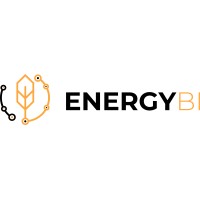Explore steps in procurement process to boost efficiency and achieve streamlined procurement in your business. Learn the essentials now!
 Understanding the steps in procurement process for business energy in the UK is more than a routine task; it’s a way of securing a company’s lifeline to operational efficiency and cost management. With energy prices fluctuating and regulatory landscapes evolving, it becomes critical for businesses to grasp the complexity of acquiring energy.
Understanding the steps in procurement process for business energy in the UK is more than a routine task; it’s a way of securing a company’s lifeline to operational efficiency and cost management. With energy prices fluctuating and regulatory landscapes evolving, it becomes critical for businesses to grasp the complexity of acquiring energy.
Not all steps in procurement process are created equal, and I’m here to walk you through what truly matters. Laying a solid foundation for procurement isn’t just about signing a contract; it’s about strategic decision-making, informed by the ins and outs of the market.
Taking control of your business energy starts here, with steps in procurement process that don’t just guide you through the process but ensure you’re doing it with the wisdom of the market behind you. It’s not just about a list of actions to take; it’s about understanding why each step is crucial to your business outcome in the ever-changing UK energy sector.
The Essential Steps in Procurement Process
I begin with a deep understanding of my business’s energy needs and objectives, which is a critical initial step in the steps in procurement process. I consider my company’s size, operating hours, and energy consumption patterns. It’s about knowing what I need before I start looking for it, effectively setting the stage for a streamlined procurement strategy.
Next, I jump into market research and supplier evaluation. This isn’t just about finding the cheapest rates; it involves assessing broke and supplier reliability, transparency, contract flexibility, and customer service. Considering renewable energy options is also vital via REGOs , especially with the UK’s increasing focus on sustainability.
Then, I proceed to request proposals and compare offers. This step is where I gather detailed information from potential suppliers. I meticulously compare tariffs, payment terms, and any additional services like energy management systems. I make sure everything aligns with my company’s specific requirements.
It can help to leverage expert knowledge at each of these stages, but I believe you must have some level of subject matter expertise in the company as the UK energy market can be complex. Laws, market trends, service charges and energy prices are always changing.
I also keep in mind the legal and regulatory considerations specific to the UK energy sector. Compliance with standards like the Energy Savings Opportunity Scheme (ESOS) and the UK’s commitment to carbon reduction targets shapes my procurement process. It’s not just about being lawful; it’s about being responsible.
Conclusion
In the complex landscape of UK business energy procurement, following the defined steps in procurement process can be the difference between an average agreement and a cost-effective energy strategy that meets your company’s needs. By identifying objectives, conducting thorough research, evaluating proposals, employing effective negotiation tactics, and managing your contracts effectively, you unlock a pathway to sustained energy budget control and operational efficiency.
These five steps in the procurement process do more than lead businesses to reasonable energy prices. They create a framework for smart decision-making that factors in the fluctuating market dynamics and future uncertainties like regulatory changes or market reforms, particularly in the post-Brexit era.
When I reflect on the practical side of procurement, I see these steps as a checklist for success. They encapsulate essential tasks, support legal compliance, and guide companies through the often-tumultuous process of securing energy contracts. But let’s not forget that procurement isn’t a one-time event; it’s a cyclical process requiring ongoing attention and revision.
UK businesses are well advised to not just understand but to also implement these steps in procurement process, leaning on the support of industry experts. This collaborative approach ensures adherence to the best practices inherent in each stage and aligns your company with the foresight to anticipate and adapt to an ever-evolving energy market.
In closing, the art of procuring business energy is about smart planning, foresight, and active management. Engage with the steps above, and you empower your business with a resilient and adaptive energy procurement strategy that safeguards against unpredictability while anchoring to a foundation of fiscal prudence

Ready to transform your procurement process? Visit Energy Business Intelligence for expert guidance and tailored solutions that propel your procurement strategy to the next level.
Why not take a look at the Energy Management with Knowatt: A Comprehensive Guide Click Here




